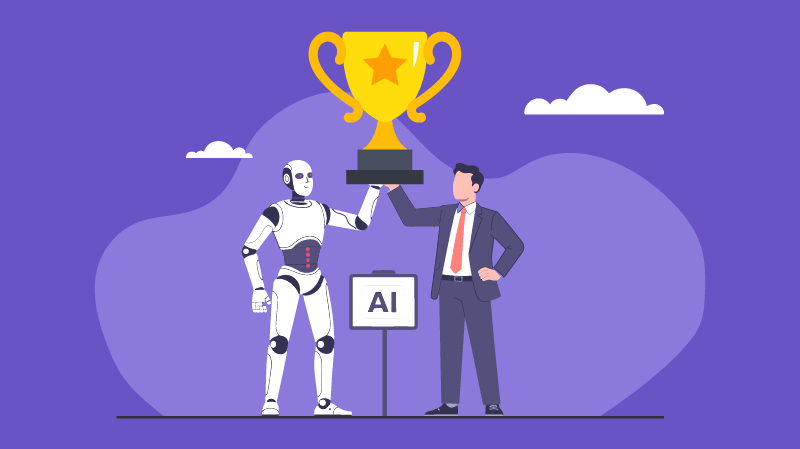Importance of Employee Recognition: How it Impacts Experience, Retention, Culture, and Business Goals

A Global Employee Recognition and Wellness Platform
Employee recognition goes beyond simply rewarding hard work and achievements. It is a vital element that influences an organization’s success in profound ways. But why is employee recognition important?
It extends far beyond merely creating a positive and motivating workplace atmosphere. It enhances employee experience and drives long-term retention. When employees feel valued and appreciated for their contributions, their engagement and loyalty increase, giving the organization a competitive edge.
Since employees are the backbone of any thriving business, recognition acts as the fuel that drives motivation and performance. Understanding its true potential is essential for building a sustainable, high-performing workforce.
In this blog, we’ll explore the transformative power of employee recognition, supported by real-world examples and statistics.
So, let’s dive in!
Key Takeaways
- What is Employee Recognition?
- Impact of Recognition on Employee Retention and Employee Experience
- How can the Recognition Program Drive Business Goals?
- How can Recognition Boost Employee Well-being?
- Understanding the Effective Ways to Recognize Employees
How Does Recognition Impact the Employee Experience?

Recognition plays a crucial role in shaping the employee experience as it sparks a positive chain reaction throughout an employee’s work life. Recognized employees tend to be more productive, as the positive reinforcement encourages them to maintain high performance levels.
Moreover, companies that prioritize recognition typically enjoy higher retention rates, as employees are more likely to stay with the organization that values their efforts.
Read more: The Amazing ROI of Rewards and Recognition In Your Organization
Benefits of Recognition on Employee Experience
-
Motivation and Engagement: Recognizing employees for their hard work and dedication inspires them to be more committed to organizational goals.
-
Sense of Belonging: When employees receive recognition, it encourages them to actively participate in team activities and company initiatives. This reinforces their sense of belonging within the organization.
-
Boosts Peer Relationships: Recognition encourages positive interactions among colleagues and promotes a culture of appreciation and support.
Example of Organization Boosting Employee Experience with Recognition
Zappos, the online retailer famous for exceptional customer service, exemplifies how recognition can enhance employee experience. Their innovative "Zollar" program lets employees award each other points known as "Zollars," which can be redeemed for various rewards.
Furthermore, Zappos encourages frequent appreciation among its employees by promoting peer-to-peer shoutouts. This approach empowers employees to celebrate all achievements, fostering a sense of belonging.
How Does Recognition Impact Employee Retention?

Recognition reinforces an employee's sense of purpose and importance within the company. The validation of their efforts and achievements makes them feel valued and appreciated for their contributions. This as a result develops a stronger emotional connection to their workplace, making them less likely to seek opportunities elsewhere.
Benefit of Recognition on Employee Retention
-
Increased Loyalty: Recognized employees are more likely to remain loyal to their organization, reducing turnover rates and preserving institutional knowledge.
-
Reduced Cost of Hiring: Recognized employees are less likely to seek opportunities elsewhere, leading to lower turnover rates. It reduces the costs associated with hiring and training new employees.
-
Enhanced Organizational Culture: A culture of appreciation and recognition within an organization helps in improving employee retention and attracting top talent.
Example of Organization Boosting Employee Retention with Recognition
One example of an organization boosting employee retention through recognition is Cisco Systems.
Cisco has implemented a comprehensive employee recognition program called the "Connected Recognition" program. It is designed to celebrate and reward employees for their contributions through spot awards, manager nominations, and annual awards.
The Connected Recognition program has been highly successful in boosting employee morale, engagement, and retention at Cisco. It serves as a model for how organizations can use recognition to improve employee retention.
How Can Recognition Boost Company Culture?

Recognition plays a pivotal role in shaping and strengthening a company culture by providing a behavioral nudge.
When recognition is made visible through newsletters or office displays, it sets a standard and encourages employees to go the extra mile. The visibility reinforces a more positive and productive work environment for their employees.
Benefits of Recognition on Company Culture
-
Reinforces Core Values: When employees are recognized for behaviors that align with company values, it encourages employees to embody them.
-
Positive Work Environment: Recognition makes employees feel appreciated. This makes them happier and more satisfied in their jobs, which leads to higher levels of job satisfaction and overall happiness.
-
Enhanced Teamwork: When recognition is part of the company culture, employees are more likely to support and celebrate each other's successes, leading to stronger team bonds.
Example of Organization Using Recognition to Build Company Culture
Insurance Australia Group (IAG), a leading general insurance company, implemented a strategic recognition program to drive cultural transformation. Their approach was centered on the idea that recognition should be given when employees demonstrate behaviors and actions that are important to the company.
Therefore, they implemented a comprehensive recognition program that encouraged managers and peers to acknowledge colleagues through peer-to-peer recognition and tangible rewards who exemplified the company values.
The impact of this strategic recognition program was significant. IAG reported an increase in employee engagement scores and a more cohesive company culture across their workforce.
How Can a Recognition Program Drive Business Goals?

In a study conducted by Aberdeen group, found that effective R&R programs led to an average corporate revenue increase of 9.6%.
Recognition programs that are well-designed and implemented can align employee efforts with business objectives, leading to improved performance and greater profitability.
Furthermore, employees who feel valued and appreciated for their work even go above and beyond their usual duties. This leads to improved efficiency and output across the organization.
Use of Recognition in Driving Business Goals
-
Increased Profitability: Recognition programs can positively impact profitability by improving employee performance. This can lead to higher revenues and margins.
-
Customer Satisfaction: Engaged and motivated employees are more likely to deliver exceptional customer service, leading to higher levels of customer satisfaction.
-
Employee Advocacy and Brand Reputation: Recognized employees are more likely to become advocates for the company, promoting its brand and reputation.
Example of Organization Using Recognition to Drive Business Goals
Microsoft is an organization that uses recognition to drive business goals. It strategically links recognition to behaviors that impact sales and customer satisfaction for their cloud services.
Through initiatives like the Customer Obsession Awards, Microsoft reinforces the importance of customer retention in driving revenue growth.
Additionally, Microsoft rewards employees who drive pipeline growth and close complex deals. They link recognition to key sales metrics that directly contribute to revenue.
How Can Recognition Boost Employee Health and Well-being?

Regular acknowledgment and appreciation make employees feel valued and part of a caring community, which can significantly boost morale.
Recognition plays a significant role in enhancing employee health and well-being by addressing the human emotional need for recognition and appreciation. When employees receive recognition for their efforts, it triggers a cascade of positive psychological and behavioral responses.
Benefits of Recognition on Employee Health and Well-being
-
Improved Mental Health: Appreciation boosts self-esteem and confidence, contributing to better overall mental health.
-
Stress Reduction: Regular recognition can lower stress levels by creating a more supportive work environment. When employees feel valued, they're less likely to experience work-related anxiety and burnout.
-
Better Work-Life Balance: Employees who feel appreciated are more likely to maintain healthy boundaries between work and personal life, as they feel secure in their position.
Example of Organization Using Recognition to Boost Employee Health and Well-being
Patagonia's approach to employee recognition is deeply intertwined with its commitment to promoting health, wellness, and work-life balance.
For instance, their on-site yoga and fitness classes promote physical health and foster a sense of community and teamwork.
In addition, Patagonia emphasizes the value of well-being by directly tying recognition to participation in various wellness initiatives. Employees who engage in these programs are honored as “Most Valued Participants” and reward them with Patagonia gear.
Patagonia’s recognition efforts extend beyond the office as well, with family support programs and volunteer time-off policies that demonstrate a deep commitment to support employees beyond the workplace.
Effective Recognition Strategies

Recognizing and appreciating your employees is vital for nurturing engagement, satisfaction, and productivity. While there are many options for employee recognition, not all carry the same impact.
Let’s look at some of the most effective ways to recognize employees:
1. The Power of Personalized Recognition
Personalized recognition has the ability to make individuals feel truly seen, valued, and appreciated. It taps into the unique motivations, aspirations, and characteristics of each employee and acknowledges individuals in a way that is specific and meaningful to them personally.
Key aspects of personalized recognition include:
-
Specificity: Recognizing particular actions, achievements, or qualities rather than giving generic praise.
-
Timeliness: Offering recognition promptly after the noteworthy behavior or accomplishment.
-
Relevance: Ensuring the recognition aligns with the individual's values, goals, or preferences.
-
Authenticity: Providing sincere and genuine acknowledgment rather than insincere praise
2. Public Recognition: A Catalyst for Motivation
According to research by Great Place to Work, employees who feel recognized at work are 2.2x more likely to drive innovation and bring new ideas forward
Publicly acknowledging employees for their accomplishments serves as a powerful motivational tool, fostering a culture of appreciation and excellence within an organization.
When leaders openly praise their team members' achievements, it not only validates individual efforts but also instills a sense of pride and value in their work. Furthermore, it inspires others to strive for excellence as well.
Public recognition, whether through team meetings, company-wide emails, awards ceremonies, or public shout-outs, amplifies this impact.

Source: Vantage Rewards by Vantage Circle
3. The Importance of Employee Feedback
Gathering regular feedback from employees about how they prefer to be recognized is crucial for ensuring that your recognition strategies remain effective and engaging.
Begin by conducting regular employee surveys to track evolving preferences on recognition methods and frequency. Complement these surveys with focus groups, bringing together diverse employees to dive deeper into survey results and explore new ideas.
You can also maintain an ongoing dialogue by implementing suggestion boxes, both physical and digital, ensuring prompt review and response to demonstrate the value of employee input.
Additionally, you can leverage exit interviews to identify gaps in the recognition strategy by specifically inquiring about how recognition influenced departing employees' decisions.
Bottomline
In conclusion, employee recognition is essential for building a thriving organization. Organizations that prioritize recognition strategically will unlock their workforce's full potential and achieve sustainable success.
The statistics and examples demonstrate that recognition can significantly impact key workplace outcomes if implemented carefully. So, don't hesitate to prioritize employee recognition today!
FAQs
1. What are the benefits of Employee Recognition?
Employee recognition boosts morale, engagement, and productivity. It also reduces turnover, fosters loyalty, and creates a positive workplace culture.
2. Why is Employee Recognition more Important than ever?
With hybrid work and increased competition, recognition helps keep employees feel valued and motivated. It also strengthens team cohesion, especially in remote work setups.
3. Why is Recognition Important in Leadership?
Recognition helps leaders build trust, motivate teams, and drive high performance. It shows that leaders value their employees' contributions and are committed to acknowledging their efforts.



















